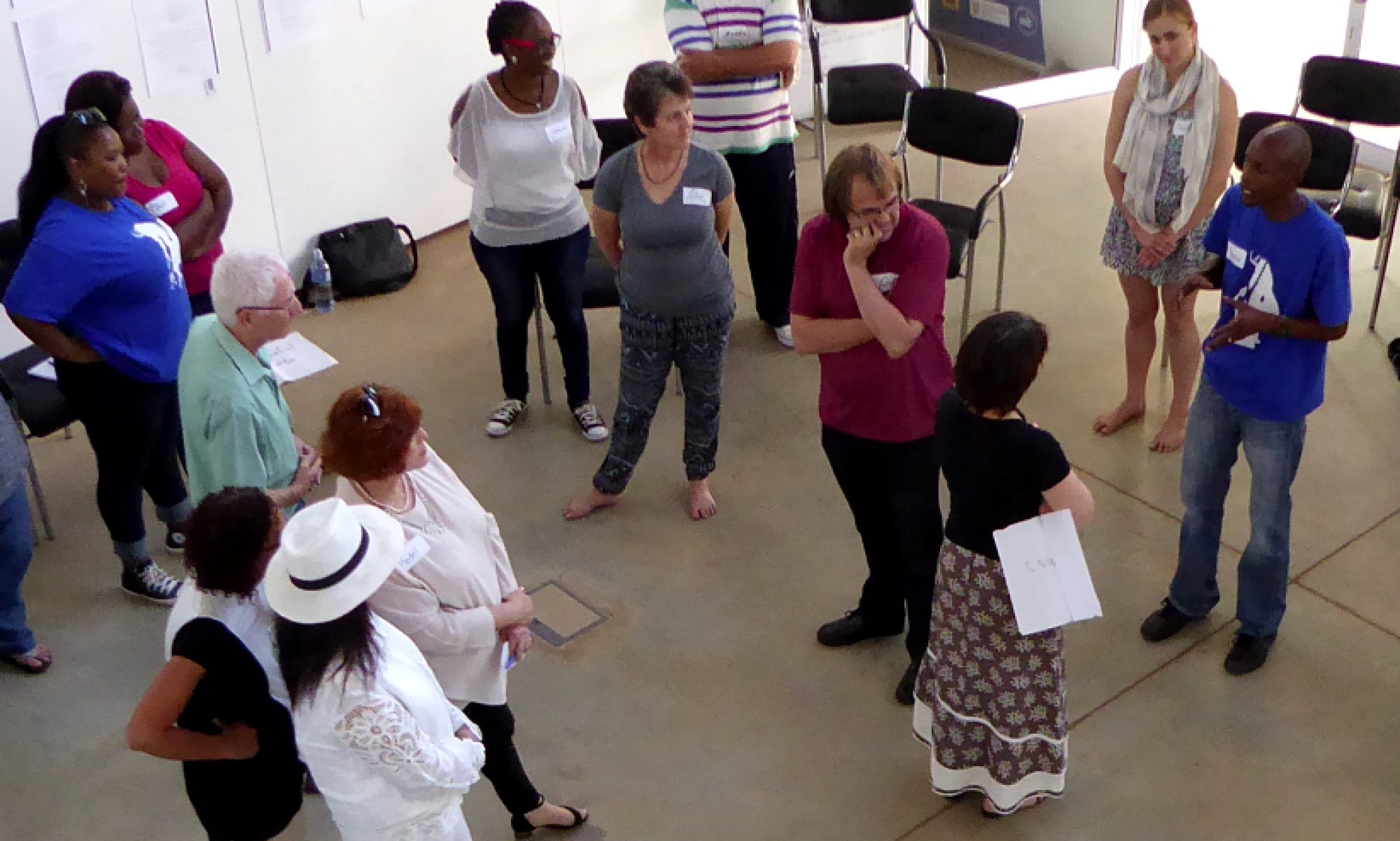 While both improvisation and facilitation works best when the process and the outcome is open-ended, this does not mean it cannot be structured. How many times have you heard a facilitator or trainer say ‘trust the process’. One of the most important reasons for this trust is that, if the right ingredients are in the room, insight, transformation and learning is inevitable.
While both improvisation and facilitation works best when the process and the outcome is open-ended, this does not mean it cannot be structured. How many times have you heard a facilitator or trainer say ‘trust the process’. One of the most important reasons for this trust is that, if the right ingredients are in the room, insight, transformation and learning is inevitable.
The S.T.O.R.I… model summarizes these necessary elements and demystifies the enigma of the process.
In recent years much has been written about the structure of myth. If you have read the Bible, or studied Greek mythology, or heard fairy tales from your grandmother, studied some Shakespeare at school, or just seen a few Hollywood films, you would recognize this structure right away. It is the dramatic structure underlying almost all stories and serves the purpose of taking the main character in the story on a journey of self discovery and personal growth. Through identification with the hero the reader or spectator can learn about life. And gain understanding into their own journey.
If you use these same elements, your trainees or workshop participants can also undergo their own journey as you structure the learning process according to these principles. But just in case you think this will be a revelation, you will probably see that your process already follows this structure. That is because the structure of myth simply follows the pattern through which the human brain naturally opens up to new ideas. Your trusted process works because these elements were probably already there. Only now you can identify them and be more intentional in planning them.
Below is a summary of the story stages.
In the mean time, if you are coming to the Applied Improvisation Network’s annual conference; we will be working with this model and the principles of Applied Improvisation to present to you a three day Train the Trainer workshop so you too can add more interaction, creativity and ZING when you train and facilitate.
Here the S.T.O.R.I… model
S Situation and a Summons—Call to Adventure
Every participant comes into your training room with his/her own current reality or situation. Your workshop in some way has promised them something that can get them unstuck or propel them forward. It presents to them a summons. Every trusted process helps people see their current situation in a new light so that they feel summoned to new possibilities.
T Threshold full of Terrors—Facing the guardians
And just as they begin to play and engage, they become fearful of what others may think, or of what would happen if they made a mistake. Especially in Applied Improvisation, the facilitator needs to take great care in creating a safe to fail space so that these giants of inhibition and fear can be vanquished. Trusted processes involve various exercises and techniques that help people feel safe with each other and the facilitator.
O Obstacles and OBSTACLES—The Journey
Every trusted training process involves games and exercises that stretch participants beyond what is comfortable. They provide tests and trials, or challenges that develop skill and insight. Yet these are only the obstacles (no capital letters). Yet all these activities are metaphors for the OBSTACLES (capital letters). These are the mindsets and paradigms that keep participants from breaking into new ways of thinking and doing. The trusted process seems simple on the outside, but brings participants to the brink of self transformation.
R Reward and Return—Committing to face the reverent
When participants break through their paradigms, they typically come face to face with their own restrictive mindsets, their nemesis. Successful recognition of these brings reward and awakens a need in participants to commit to something new. The trusted process builds into it some kind of reward system and opportunity for people to make personal commitments. These serve to motivate them to return to their current realities where the old mindsets might rise again like reverent ghosts returning to haunt them.
I Integrating a new Identity—Transforming your world
No process is complete unless it supplies a follow up programme that can support people back in their work-life contexts to remember what they experienced during their adventure with you. All participants need support to integrate their learning into their way of being, their identities.
‘…‘ And the story never ends
Then just as you worry that only one or two people from your workshop really shifts, or that a single 3 hour training programme cannot possibly accomplish such deep transformation, you remember that the story never ends. While you can design and structure your workshop as a story, each participant is on their own journey over which you have no control. Their journeys might have to take them back to a threshold to vanquish more fear giants, or to face another shadow that returns to haunt them. Your only job is to be open to where people are in their journeys and support them by designing a worthwhile adventure.
If it is not happy, it is not the ending. And if it is happy, it is a new beginning. Petro Janse van Vuuren
Catch Playing Mantis and Raymond van Driel at the Applied Improvisation Network’s annual conference in Austin Texas!!
For train the trainer workshops in South Africa, click here.
OR contact Petro in Johannesburg, Burgert in Cape Town and Raymond in the Netherlands.
For more info on The Applied Improvisation Network Click here.
For more info on the AIN conference Train the trainer workshop Click here.

